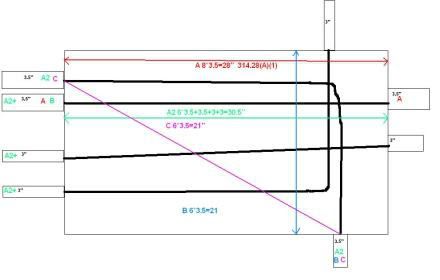Nutty Professor
New member
- Location
- Aitkin, Minnesota, USA
Sizing a pull box that contains both straight and angle pulls. The box has two -3 inch pipes and two -3.5 inch pipes all in a row on the left side of the box. One 3 inch pipe and one 3.5 inch pipe are straight pulls and go out the right side. One-3 inch pipe is an angle pull and goes out the top. One-3.5 inch pipe is an angle pull and goes out the bottom. Can someone confim the minimum size pull box for this application. Also my real question would be: When sizing a pull/junction box that contains both straight and angle/upulls we my have pipes in the same row that have applications to both 314.28 (A)(1)&(2).





